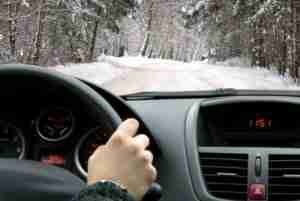At some point, while learning to drive, you realize you are rolling around in a machine that weighs in at more than a ton. This is a serious realization. You start to understand that if you are not careful, you could hurt someone. It is something that you are told while you are learning to drive, but it is a feeling you need to experience for yourself. Your senses become accustomed to moving down the road at speed as you take in the world around.
Think back to the first time you drove your car after it snowed. It was an entirely new sensation. The car didn’t feel as stable as it did on the dry road and if you ever hydroplaned, you experience fear like no other with the car careening out of your control.
In our last email, we talked about how to make your car safer during the winter. However, even with the most prepared car, you still must understand and know how to deal with the rain and snow.
If you must go out, one of the major things you need to take into account is the speed you are driving. While there may be posted speed limits on the highways of 60 miles per hour, that speed is dependent on the driving conditions. During and after a snowstorm, conditions are not optimal or safe. New York State Vehicle and Traffic Law take into account the conditions around you. Traveling at speeds that are greater than is reasonable and prudent under the conditions and having regard for the actual and potential hazards is clearly stated and requires that the driver take current conditions into account. At that point, the posted speed limit is disregarded in lieu of a reasonable and safe speed.
Take note of the road conditions. What sort of connection will your car have with the road? Try to stay on roads that have been plowed and salted. Without the salt, you may see a layer of snow, but you may not know what is under the snow, such as a layer of ice. Always assume the worst and if you must travel on unplowed or salted roads, do so with extreme caution. If there are cars around you make sure to keep a significant amount of distance between yourself and others.
Slow and deliberate movements are called for when driving in the snow. Not only when it comes to the speed of the car and the amount of gas you give it, but also with starting and turning your car. Take a turn at much slower speeds and do not move as quickly as you normally would. Feel the car move into the turn. Make sure the car is moving as you expect it. If you start to lose control of the car, do not slam your brakes but rather slowly apply your brake while continuing to turn in the direction you are moving. Sudden movements will add to uncertainty and danger.
The most important thing is safety. If you do not feel safe as a driver, or you do not feel your car is safe as a mode of transportation, the best thing to do is stay off the roads. Call a friend or a family member to help you. Do not put yourself, your family, or the people around you at risk.
If you’re injured in a car accident where snow and ice or other hazardous conditions are a factor, Contact Elan Wurtzel for a consultation and case review.




